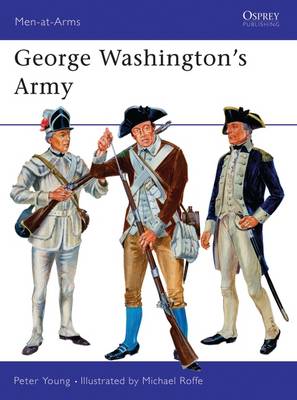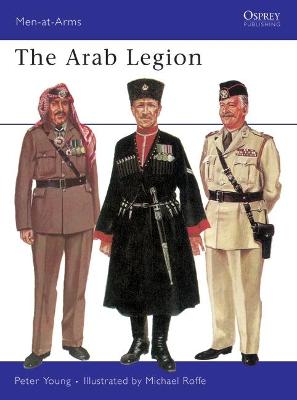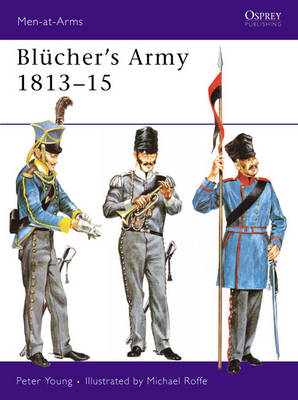Men-at-Arms
1 primary work • 5 total works
Book 14
The year 1642 witnessed the outbreak of the first English Civil War, which saw Royalist troops loyal to King Charles fight the Parliamentarians in several major battles and many sieges. Peter Young explores the tactics, equipment and organisation of the armies of both sides, drawing a compelling picture of what it must have been like for the men who lived and fought in England over 350 years ago. Chapters on fighting, cavalry, infantry, artillery and discipline examine the subject in depth, with many contemporary accounts, such as those of Royalist Captain, Richard Atkyns, who served in one of the most "active" regiments of the war.
This book examines the uniforms, equipment, history and organisation of George Washington's Army. The chronology of the American Revolution is summarised, and its major personalities introduced. Uniforms are shown in full illustrated detail.
In 1921, Lieutenant-Colonel Frederick Gerald Peake formed the Arab Legion as a police force in the former British protectorate of Transjordan. The Legion's main roles were to keep order among Transjordian tribes and safeguard the villagers from Bedouins. In subsequent years, under the leadership of Glubb Pasha, the Arab Legion was transformed into the best-trained of all Arab armies. This richly illustrated book examines the history of the Arab Legion, detailing the infantry, supporting arms and services, and air, sea, police and national guard forces. It also profiles leaders, like Pasha, who were influential in the evolution of this force.
The Prussian Army of 1813 15 was very different not only in appearance but in spirit from that of 1806. Blucher was essentially a cavalryman and, despite his years and heavy responsibilites as Commander-in-Chief, he thought nothing of leading cavalry charges in person during the Napoleonic Wars (1799-1815). Although this was dangerous, he succeeded in driving his raw regiments to to victory. This book by a leading military historian analyzes the corps, regimental and squadron strength of the infantry, cavalry and artillery arms of Blucher s army. The text is accompanied by eight colour plates and several contemporary illustrations to depict the uniforms and experiences of the troops who participated in the final defeat of Napoleon."
The Chasseurs of the Guard had its origins in the Guides raised by General Bonaparte during his Italian Campaign of 1796. Not only did the Chasseurs prove to be excellent soldiers, but they also served as Napoleon's immediate escort whenever he went on campaign. This book provides an overview of the regimental history of the corps, profiling some of its most memorable personalities, including Jean-Baptise Bessieres, Marshal of France, and Prince Eugene de Beauharnais, Commander of the Chasseurs a cheval. The uniforms, guidons and standards of the Consular Guard, later renamed the Imperial Guard, are illustrated throughout the book.




